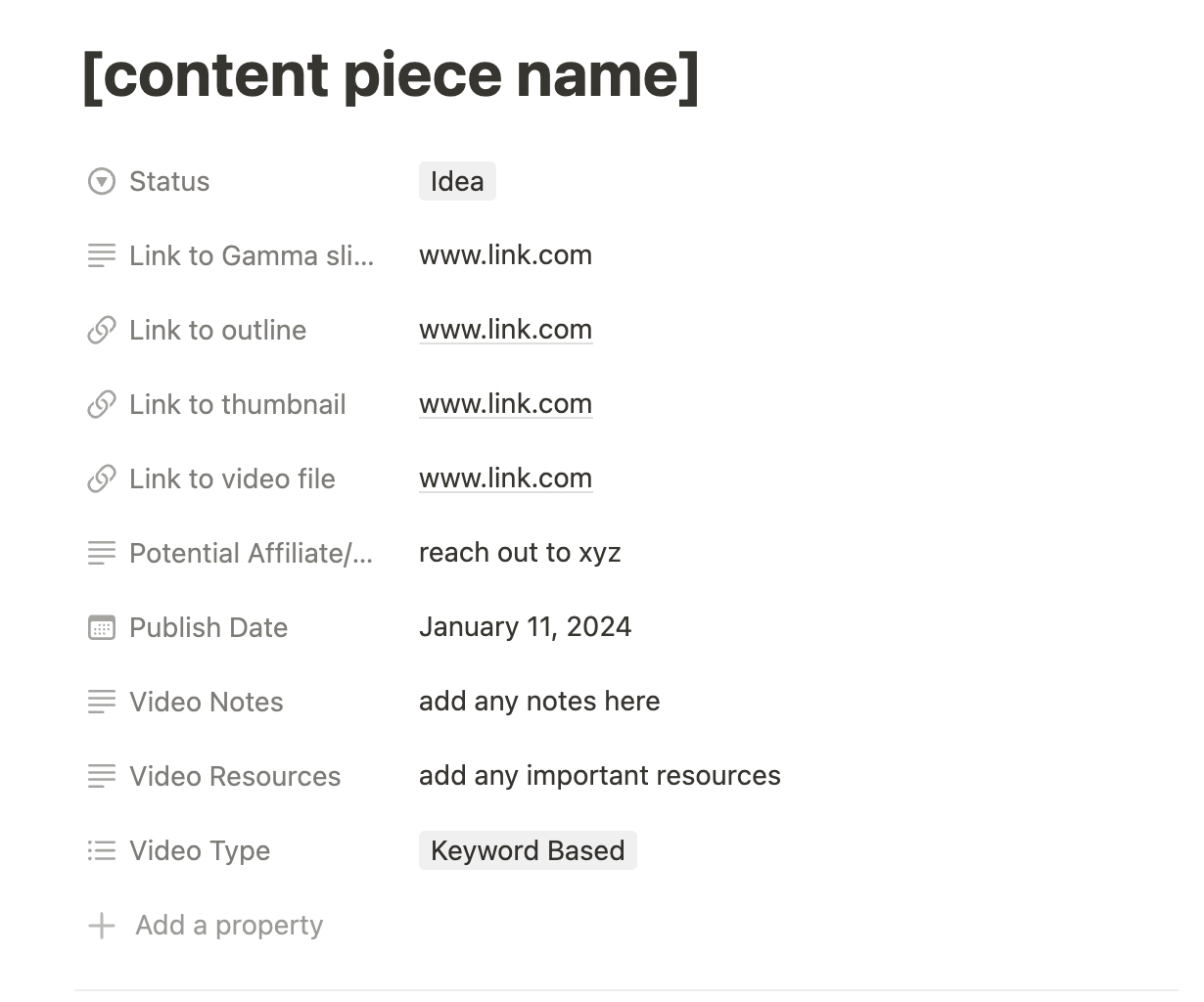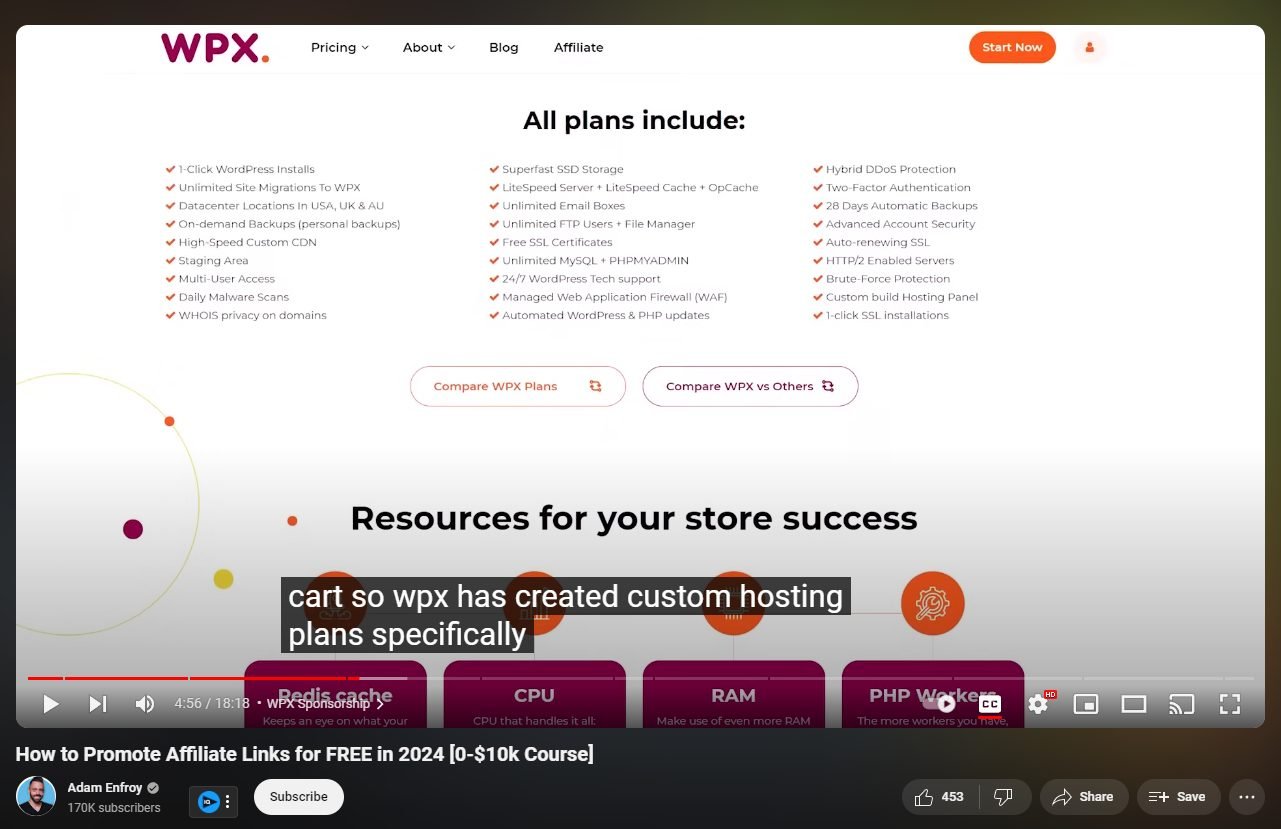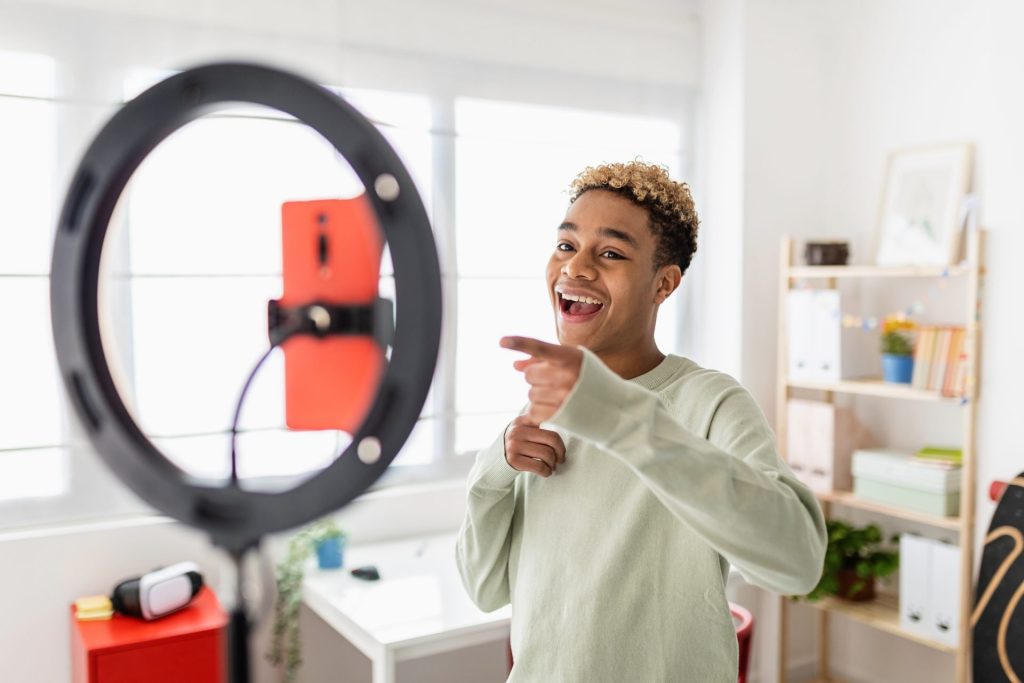




Successful content creators get to live a special kind of life.
They spend their day creating content they’re passionate about and helping their audience to level up. They also get:
- time freedom (no more 6 A.M. alarm clocks)
- location freedom (working from anywhere in the world)
- (maybe most importantly) independence—goodbye annoying boss.
Many people dream of having a content creator’s life (and its benefits).
If that’s you, there’s a specific question you need to be able to answer:
What are the ways a content creator gets paid?
After all, no money = no benefits. At the same time, knowing the answer to this question can help you decide if becoming a content creator is the right move.
In this article, I’ll answer exactly how content creators get paid (with the best methods around). I’ll also dive deep into the various methods’ expected timescales (as in when you get paid) and income ranges.
Finally, I’ll go over how to monetize your content so you get paid multiple times. Getting paid more than once is one of the industry’s best-kept secrets—and I’ll share with you how to do it.
The 4 methods content creators use to get paid
A quick note before diving into the methods. By no means is the below list exhaustive. However, it focuses on the methods that give the best results.
Other methods might take too long or their results might not be worthwhile.
With that out of the way, here is how to get paid as a content creator.
What’s better than having a brand pay you money before your content even goes live? When monetizing your content, not much.
In exchange for this pre-payment, you mention the brand in your content.
In the case of a video content creator, this could mean you “interrupt” your video to plug in the sponsor. You could also find a way to naturally mention the sponsor in your video.
Here’s an example of Adam mentioning WPX as the sponsor of a video speaking about promoting affiliate links. Quite natural considering the topic.

Similarly, if you’re creating a blog post, you’d mention that it is sponsored by the relevant brand. Pretty straightforward.
The downside?
Getting sponsors for your content requires you to have an audience already in place. It’s tough to start a YouTube channel, a blog, or a podcast and immediately find someone to pay you money for your content.
The good news?
Once you do, getting paid as a content creator is a very lucrative opportunity. Many content creators also set rules in place so companies sponsor several pieces of content at a time—which provides recurring revenue.
2. Recommending other people’s products
The premise of affiliate marketing revolves around creating content and then recommending other companies’ products in this content.
All you need to do is align your affiliate recommendations with your audience’s wants and needs. Doing so means you’ll get a commission when they buy using your affiliate link (a unique link the brand you’re promoting gives you).
You can then share this affiliate link in places where your audience can find them. Here’s an example from one of Adam’s YouTube video description sections:

Someone interested in web hosting might click the WPX link and buy a subscription. WPX would then pay Adam a commission at the end of a set period. The same applies to the Skool link found above.
When starting, getting paid as an affiliate (relative to sponsorships) is easier. Joining the right affiliate programs is a relatively straightforward process. It generally doesn’t require the same requirements as sponsorships.
The cons? You probably won’t get paid as much as getting direct sponsorships.
3. Letting businesses advertise on their content—automatically
Imagine getting paid just for having people consume your content. There’s no need to do anything extra.
That’s where automated ads come in. Business owners will pay to get their ads shown on your content. As a result, you make money.
Think about the (somewhat) annoying YouTube ads you get before you watch videos.
The ones that say, “Sorry to interrupt your video… I know how annoying it is…” and then they interrupt anyway.
You might also recall the “sponsored ads” you see on some news article websites you read.
Advertisers can target people consuming specific content and show them their ads.
As a content creator, all you generally have to do is allow these ads to be shown, then the platform will then take care of the rest.
Is it easy to get paid this way? It depends. There are prerequisites for this to happen and hitting these requirements depends on:
- your industry
- how competitive it is
- your subscriber count
- and more.
For example, getting approved for ads on YouTube requires
- Having 1,000 subscribers and 4,000 valid public watch hours (in the last calendar year) OR
- Having 1,000 subscribers and 10 million valid public watch hours in your short videos (within the last 3 calendar years).
Some YouTube content creators can reach this within a few months of publishing videos. Others take a bit longer.
Here’s an example from Adam’s channel:

I got this ad as soon as I clicked on his latest video.
In this case, the vendor advertised on Adam’s channel, I (the viewer) got served the ad, and Adam got paid.
4. Sell your own products/services
As you produce more content, you get to understand your audience better.
You’ll know:
- what makes them tick
- their pain points
- their pleasure points
- and most importantly, how to help them through your content.
You’ll also start to see positive comments on the content that resonates and somewhat of a lukewarm reception to other less effective content.
In and of itself, this is great feedback.
Why? It will help build your own products and services to provide even more value to your audience.
While not every content creator wants to do this, taking this step has many benefits. It will turn you from a regular content creator (constantly churning out content) to building long-term assets that generate income.
It will also allow people seeking more in-depth help to pay for additional products or services.
Even better? Your audience already finds value in your free content, so they trust that what you produce will benefit them. There’s no need to push them through forceful sales tactics—they’re already ready to buy.
This is the stage where content creators get paid the most.
Creating your products can come in the form of:
- Online courses
- Digital downloads, including PDFs, audiobooks, ebooks, etc.
- Group Coaching
- 1-1 Coaching
- Online communities
You can also share additional high-value free content that leads people to other paid products you might have. Here’s an example of this:

In his videos, Adam invites people to check out his free masterclass. In it, he provides 80 minutes of pure content to help people get started blogging. Then, in the end, he makes them an offer that can help them further.
Quick note: You don’t have (and probably shouldn’t) create all of the above at once. Instead, having a long-term plan and actively working on what you can do on any given day is much better. It means that over a period of time, you’ll have a range of offers your audience will love.
2 types of payment methods (and their timescales)
So far, I’ve given you examples of content creator methods to get paid. I also touched on the timelines each method might take to provide you with results
Another way to look at time is as follows. You have:
- methods that “pay in advance”
- methods that “pay after an action”.
Sounds interesting? Here’s what I mean…
Type 1: Payments in Advance
In each of the following payment methods:
- Sponsorships
- Paid Partnerships
- Retainer Contracts
- Crowdfunding/Patreon
- Pre-sold Merchandise
content creators get paid before doing the “real work”. Sure, there are setup processes involved—creators must contact people and companies, set up account details, or create merch.
However, once these processes are in place, they WILL get paid. There’s no ifs or buts.
Here’s an example:
- As a content creator, if a sponsor sends you money (in exchange for mentioning their brand in an upcoming video), the money is in your bank account. It’s paid before an action takes place.
- If you pre-sell merchandise, people will pay before they get the product.
These methods let the content creator know where they stand in their business. It lets them predict how much money they’ll have in their business bank account.
This certainty helps make specific business decisions, including the potential hiring of team members to create even more (or better-quality) content.
Type 2: Payments After an Action
On the other hand, some payment methods happen after creators take specific actions.
Consider the following methods:
- Affiliate Marketing
- Ad Revenue
- Pay-per-View or Pay-per-Use
- Performance Bonuses
- Tips and Donations
All of them require content creators to take specific actions that lead to someone “sending them money”. As such, this income is not guaranteed.
Let’s make this practical—if you’re a content creator following the affiliate marketing model, people need to buy a product/service through your link for you to get a commission. For ad revenue, vendors need to advertise on your videos. The same applies to pay-per-view or pay-per-use advertising models.
If you’re getting performance bonuses, this means your content is live and hitting predefined targets. Tips and donations generally happen on live shows where you’re already providing value to your audience.
There’s nothing wrong with having “payments after an action”. However, as a content creator, relying solely on these types of payments makes business more uncertain.
The solution?
Having a mix of pre-payments and post-payments in your business.
Here’s a visual way to look at these two types of payments.
|
Payment Type |
Description |
Estimated Timeline for Success |
Potential Income |
|---|---|---|---|
|
Sponsorships |
Payment received from companies to feature their products/services in your content. |
Several months to a few years |
$100 – $50,000+ per deal. Smaller creators might earn a few hundred dollars, while top influencers can command tens of thousands per sponsored post —whether it’s a video/article/podcast/etc. |
|
Paid Partnerships |
Similar to sponsorships but often involves a series of content or campaigns. Payment is made upfront. |
1-2 years |
$500 – $100,000+ per campaign. Income depends on the scope of the partnership and the creator’s reach. |
|
Retainer Contracts |
Monthly payment from brands/companies for regular content creation. |
1-2 years |
$200 – $20,000+ per month. Regular, steady income but varies greatly based on the contract terms and the creator’s bargaining power. |
|
Crowdfunding/Patreon |
Supporters pledge money monthly or per piece of content, usually collected at the start of the period. |
A few months to 1 year |
$100 – $15,000+ per month. Highly dependent on the number of supporters and the tiers of support offered. |
|
Pre-sold Merchandise |
Payment received for merchandise before it’s produced and shipped. |
At least 1 year |
$500 – $50,000+ per launch. Income varies based on product demand and the size of the creator’s audience. |
|
Affiliate Marketing |
Commission received after a follower purchases a product/service through a unique link or code. |
1-2 years |
$100 – $30,000+ per month. Depends on the commission rates and the volume of sales generated through the creator’s affiliate links. |
|
Ad Revenue |
Payment from platforms like YouTube after videos are viewed and ads are served. |
1-2 years |
$100 – $20,000+ per month. Varies greatly based on the platform, the content’s view count, and the ad rates. |
|
Pay-per-View or Pay-per-Use |
Earnings each time content like specialized courses or webinars is purchased or viewed. |
A few months to 1 year |
$100 – $10,000+ per event. Depends on the content’s exclusivity and demand. |
|
Performance Bonuses |
Extra payment if content exceeds certain metrics (views, clicks, sales) in some sponsorships. |
Several years |
$50 – $10,000+ per bonus. Typically, this depends on hitting/exceeding specific performance metrics. |
|
Tips and Donations |
Money received from viewers during live streams or as a show of support. Paid out after the action occurs. |
A few months to 1 year |
$50 – $5,000+ per month. Highly variable and dependent on the generosity of the audience. |
The above timelines and income numbers are by no means set in stone. The chosen niche, content quality, audience spending, and many more factors play a significant role.
The takeaway?
Don’t underestimate the importance of diversifying payment methods. Don’t put all your eggs into one basket if you want a long-term business. Start small and add payment methods as you go.
Time-tested concepts to get paid more than once
Creating new content day in and day out is fun… BUT it can quickly become another day job.
And I don’t think anyone wants to give up their 9-5 to get on another hamster wheel—at least not long term.
Thinking about ways to turn your content into an asset that keeps paying you is a solid move.
Here are the top ideas to consider to keep getting paid.
Build an email list/newsletter
You might love the platform you publish your content on. It might be the best thing since sliced bread.
There’s only one problem—if the platform’s team management (whether human or AI) decides you’ve broken any of their rules, your account can go from active to deleted faster than you can say “content”.
Building an email list of people (who love your content and want to see/read/listen to more of it) is one of the first things to consider.
By getting people to give you their email address in exchange for a valuable newsletter:
- You’re able to contact your audience directly
- You’re not relying on any one platform (that might restrict your account without notice)
- You can sell your audience many products and services that benefit them—something that’s against the terms and conditions on some platforms
Moreover, as creating content becomes second nature, providing additional value just means doing more of the same.
The result? You’re getting more back (in terms of financial results) as well.
Provide valuable content
Speaking of value, here’s a key idea to keep getting paid.
Always provide more value than your audience expects. Even if they’re watching free stuff, your audience is still paying with their time and attention.
And those are two valuable currencies in this day and age.
Alex Hormozi has this rule where he wants to “be one of zero”. Check it out for yourself below.
It started because he wanted to create unique content that only he could create. Even better, it’s content that no one else could create.
In other words, he wanted to:
- Say only what he could say
- Show only what he can show
This is a great way to stand out in a crowded marketplace where everyone tries to shout louder than the next person.
But how do you know what your audience actually wants?
First, listen to their feedback. Quality content is relative to your audience’s needs. You can create the best content (for you). But, it won’t get you anywhere if it doesn’t resonate with your people.
Moreover, be consistent.
It’s tough to get anywhere if you’re posting 5 times a week in the first month but then it takes you a month to get the next piece of content out.
If you’re not publishing content, you’ll soon be forgotten—tough yet true.
The best way to ensure consistency? Personally, I love using a content calendar. Just like you pencil in your important appointments, meetings, and anything you don’t want to forget, why not do the same for content?
Here’s an example of a content calendar entry for a YouTube content creator.

Through a tool like Notion, you can keep yourself organized and get a calendar view of all the content pieces you’re working on and their respective status.
Staying on top of each content’s status could be as simple as this:

I find there’s a lot of power in this simplicity. This mentality will serve you in your goal of getting paid as a content creator.
Track your data
Finally, getting paid as a content creator means you MUST know your numbers. Sponsors, affiliate managers, and people who might eventually “give you money” are interested in hard data.
It’s tough to explain why a brand should sponsor your video if you don’t know your numbers.
Knowing them also makes it easy to communicate with decision-makers who can see the value you provide.
Another consideration is that the right data:
- shortens the learning curve and
- reduces trial and error.
When you know which content pieces will likely produce the desired metrics (and which ones will flat-out fail), you can do more of what works.
This makes your job as a content creator much easier.
Don’t forget…
Becoming a content creator and getting paid starts by creating valuable content. This builds you up as an authority and increases the “know-like-trust factor” with your audience.
You then use any of the abovementioned methods to monetize your content.
Whether it’s through sponsorships, affiliate marketing, automated ads, or selling your own products, always focus on helping your audience solve their problems.
People can quickly see who’s genuine and who’s just trying to make a quick buck.
Finally, consider that in a world of people imitating each other, being authentic and having values is more crucial than ever. It’s tough (i.e., impossible) to be the second-best version of someone else.
Instead, why not be the best version of yourself? This is the only way you get paid long-term as a content creator.
